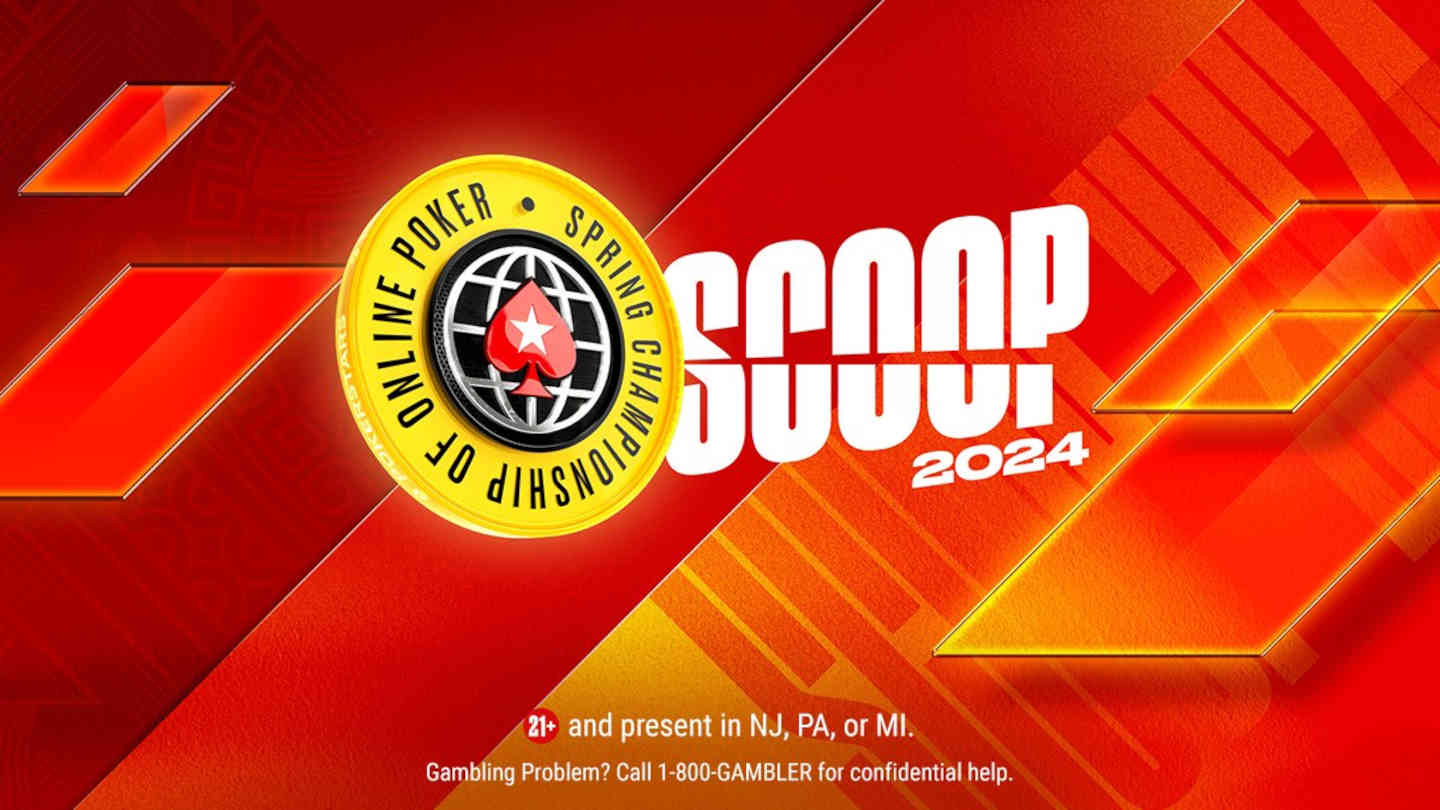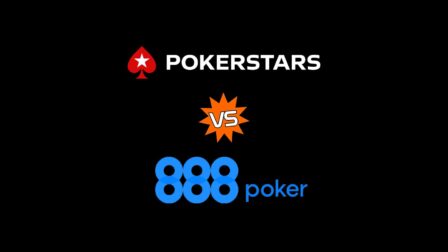Pokercoaching.com 30-Day Tournament Preparation Challenge Review

13 minutes
Last Updated: March 19, 2024
There are many resources available for those looking to learn the tournament strategy passed the basic poker rules. This is hardly a surprise given that MTTs are still the most popular form of poker beloved by the pros and amateurs alike.
So, how do you go about picking the course or a training program that’s right for you?
It’s not an easy question to answer as everyone has certain personal preferences and ideas about what such a program should have.
That said, Pokercoaching.com 30 Day Tournament Preparation Challenge created by Jonathan Little and several other top-level pros is definitely something to consider.
On top of that, it is FREE for PREMIUM subscribers, so you might want to check it out.
The original idea is to watch one lesson every day just like with their Cash Game Challange, but with the course being available in full now, you can watch as many videos as you like and think you can handle.
This is a comprehensive course covering everything you should know about playing tournaments divided into 30 separate lessons.
What you’ll find inside this Jonathan Little challenge is almost 25 hours’ worth of videos, laying out a path for those looking to become winning players or improve their ROI.
The course's initial promise is that it will transform your play in a way that you might end up cashing in fewer tournaments but also get to more final tables and claim more wins, resulting in a net improvement to your bankroll.
With each lesson, you’ll also find a short quiz allowing you to check your newly found knowledge, which is a very nice addition.
I found the Pokercoaching.com Tournament Preparation Challenge an interesting mix of some fundamental things and high-level strategies, making it interesting to players of different skill levels.
At the same time, some lessons can be a bit too much for newbies or a bit too simple or “boring” to more advanced players. But it’s hard to strike the perfect balance with these things.
And with that intro out of the way, it’s time to take a look inside and see what you can expect to find with this Pokercoaching.com course.
Day 1: Analyzing Preflop Play to Understand Your Opponents
Jonathan Jaffe presents the first lesson in the series, and he discusses some general ideas about what it takes to be a winning player.
Of course, running good and getting top poker hands will get you there, but that’s not something you can influence. Instead, Jaffe wants students to focus on the things that they can control.
Understanding your opponents and what they do at the tables is one of these things.
It’s not enough to learn advanced poker strategies or adopt the GTO style of play. These things help, of course, but they aren’t worth as much in isolation as you might think.

Once you start thinking about other players and actively trying to figure out their strategy is where things start to fall into place.
By understanding how your opponents constructing their ranges and their overall play, you’ll be able to come up with many useful adjustments.
To bring this point home, Jaffe goes through some hands and looks into different types of opponents.
He then explains how to interpret these tendencies and what they actually mean for you and your play. Once you put a player in a certain category, how do you react to this?
The final few minutes of the video discuss poker instinct and what I like about it is the fact Jaffe is very open in telling that most people overestimate this natural “feeling.” It’s dangerous to make generalizations without having factual information on other players, so do not fall victim to this mistake.
Day 2 of Tournament Preparation Challenge: 3-Betting at Different Stack Depths
In tournaments, stack depths change constantly. Blinds go up all the time, and it’s easy to go from a big short to a short stack in a single hand.
Since there is no option to top up your stack, it’s important to know how to play at varying stack depths.
In this particular video, entitled 3-Betting at Different Stack Depths, Jonathan Little looks specifically into 3-bet spots as these are quite important for your ability to build and maintain your stack.
The lesson provides an in-depth analysis with charts and ranges for different stack depths, depending on your position at the table.
It distinguishes between value hands and bluffing hands and gives you some general guidelines on how things change in these categories depending on the number of blinds you have.
Day 3 & 5 Pokercoaching.com Tournament Challenge: Adopting Exploitative Play
Although GTO is all the rage these days, some of the world's best players still agree that adjusting to your opponents’ tendencies and deviating from the GTO in certain spots is the way to improve your win-rates.
So, in his two-day course named Exploitative Play to Crush Live Tournaments, Faraz Jaka goes at great length to explain adjustments you can make in live tournaments.
Jaka is one of the best tournament pros around, so you’ll definitely want to watch this one with attention.
In the first video, Faraz covers preflop adjustments that you should consider, such as:
- Targeting loose-passive opponents
- Stealing blinds exploitatively
- Attacking the table with 3-bets
By attacking weak, passive players, you’ll be able to slowly and steadily build your stack without too much risk.
These players will rarely give you trouble, and you can simply fold against them when you see them putting heaps of poker chips into the pot, which makes them ideal targets.

Jaka also talks about some other adjustments that you won’t find in GTO poker charts, like limping behind if the table will allow it or opening with specific hands to target flats that are likely to come behind.
Live tables can also often be a source of information if you know how to listen.
Players will frequently tell you all about their plans or reveal the strength of their hand. This is an important part of the exploitative approach and something Jaka tries to underline.
The second video addresses postflop play and, once again, brings some very interesting ideas that go outside of the strict GTO approach.
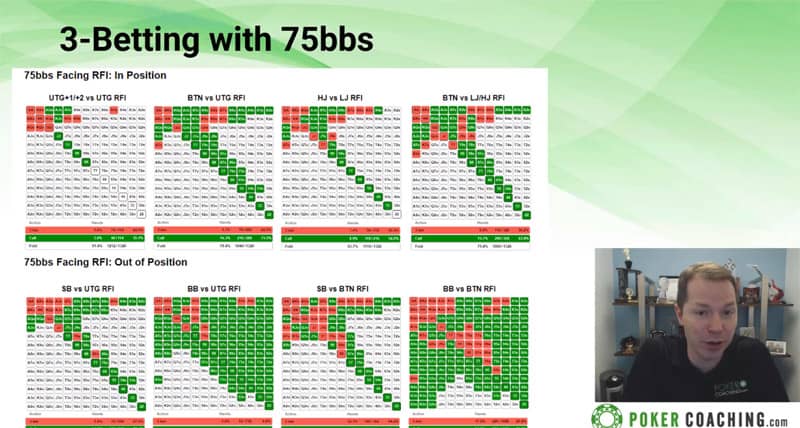
Things like downsizing your c-bets against straightforward players or increasing the size of your value bets against call-happy opponents may not work against very good players, but it will work very well against amateurs.
I’d say that these two lessons are my personal favorites in this Pokercoaching.com Tournament Preparation Challenge series.
It feels like not enough pros are talking about these things, and everyone is turning too much towards GTO while there is plenty of money to be made with these non-standard plays, especially in live poker.
Day 4 & 6: Navigating a Short Stack
It’s not uncommon to get in a situation where you have to play a short stack in a tournament. In fact, no matter how well you play, you’ll have to deal with many short stack situations in almost every tournament you play.
So, knowing what to do in these spots is of the utmost importance.
Leave it to Matt Affleck to cover this particular section in his two-part lessons, aptly named Short Stack Preflop Play.
Affleck begins by addressing one of the biggest leaks many players have when playing on a short stack, which is trying to avoid tough situations.
He explains that while jamming certain hands when you have 15-20 big blinds may be +EV, but it doesn’t necessarily have to be the most +EV play you have at your disposal.
So, he looks into different hands and hand categories and elaborates on some interesting concepts such as splitting your ranges and how to vary between shoving and flat calling depending on what you want to achieve (fold better hands out or keep the dominated ones in).
Affleck also emphasizes the importance of considering the players left to act and making adjustments based on their alleged actions.

The second video of this mini-series looks into some preflop scenarios. If you’re playing a more diversified strategy before the flop, it means you’ll get to see more flops, so you need to have a clear plan of action across different boards.
One very interesting point Affleck makes in this section is that you should understand that opponents are often capped in these postflop spots, so you’ll usually have an equity advantage.
After completing the lesson, you’ll know exactly how to profit from that fact.
However, when you get to really short stacks, nothing will help you more than a proper showing ranges, so make sure to check out our optimal push fold chart.
Day 7 of MTT Challenge: Tournament Review with Jaffe
If you’re getting tired or exhausted by this point (especially if you’ve been watching several lessons a day), Day 7 of the Pokercoaching.com Tournament Preparation Challenge offers a nice break.
It’s a long video of Jonathan Jaffe analyzing his play in the $10,000 Bellagio 5 Diamond tournament, and it’s not nearly as intensive as the previous lessons.
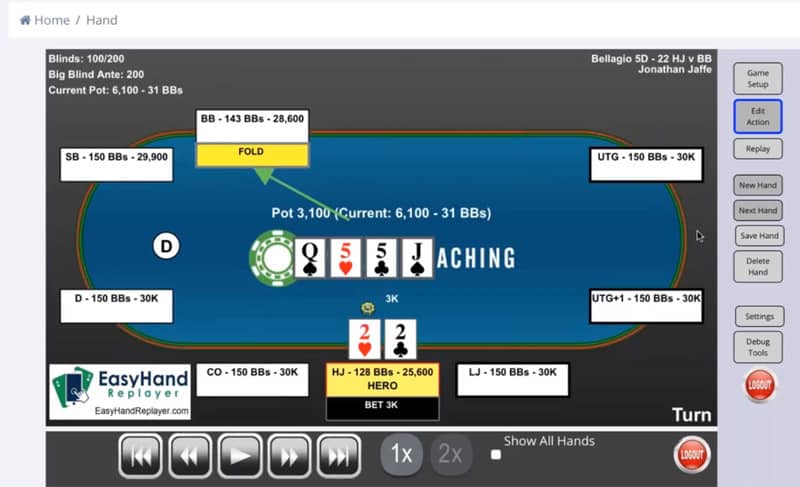
Basically, this video is all about Jaffe going through some interesting hands from the tournament and sharing his thoughts in various spots.
It’s still an excellent learning resource as he breaks things down street by street, but you don’t have to be as focused to take away some insights.
Day 8, 18, and 24: Live Play with Jonathan Little
Three of the videos in this series are of Jonathan Little playing live a tournament session on ACR and sharing his thoughts and ideas as he plays.
This is quite different from the rest of the material, as it’s not scripted content.
You get to see an experienced player in action as it unfolds.
A lot is going on in these videos as there are always at least six tables on the screen, but Jonathan is doing a good job keeping up with the action and explaining things as he goes.
Since this is a live session, there are many different spots, from early levels and deeper stacks to short stack, shove or fold scenarios, which is really nice after watching all the theory videos.

On top of the Texas Holdem strategy tips, Little provides some general advice on setting things up while playing multiple tables, briefly discusses the value of buying into tournaments late, and any other areas.
So, it’s just a solid few videos that belong inside a tournament preparation course, and you should not skip it.
Day 9 of Tournament Challenge: Typical Button vs. Big Blind Scenario
Jonathan Jaffe is back for Day 9, this time around with a video covering one of the most important spots in all of Hold’em – the button vs. the big blind scenario.
These spots are complicated because of wide ranges that both players are likely to have, which leads to many complex postflop spots.
Still, given how frequently all players find themselves in these situations, constantly trying to improve is simply a must.

He approaches this lesson by having two of his students playing a simulated one-on-one match and analyzing their play.
You’ll get to see quite a few different spots come up, and Jaffe provides an elaborate explanation for every single one of them, no matter how irrelevant or insignificant it may seem.
Day 10: Taking Big Blind Play to the next level
Day 10 of Pokercoaching.com Tournament Preparation features the recording of a webinar from Matt Affleck named Advanced Big Blind Strategies covering, you guessed it, play from the big blind.
Of course, having proper tools like Poker Tracker 4 will help you identify your opponent tendencies, so if you do not have a tracker in your arsenal, make sure to get at least a free trial of it.
To kick things off, Affleck goes into some tendencies of the general population when it comes to playing from the big blinds, such as:
- Defending very wide due to small raise sizes
- Failing to adjust to increased raises
- Not 3-betting enough from the big blind
He then analyzes some player ranges and suggests potential improvements, the big one being 3-betting more often in these spots.
Despite the very good odds you’re getting on the call, there are merits to 3-betting with certain hands, and these need to be included in your strategy.
However, as stacks get shorter, Affleck actually suggests more calling and less 3-betting. While it may seem strange at first, it does make sense because the postflop play is much simpler when you’re on a shorter stack.
Getting your chips in the middle when you hit a decent piece of the flop is much easier when you have 20 big blinds behind than when you’re playing with a 50+ big blinds’ stack.
Day 11, 12, 13: $10 Tournament Review
Days 11 through 13 are reserved for analyzing a $10 tournament played by one of Little’s students.
This analysis is very interesting to see after watching some more advanced concepts and play from higher-level events because it shows that play on the lower levels is still very far from the GTO.
In these videos, Little goes through many interesting hands and shares his thoughts about the situations the hero finds himself in.
He doesn’t always agree with the plays that were made and explains why this is the case.
During the analysis, a lot of attention is given to poker stats and how this information should factor into your decisions at the tables.
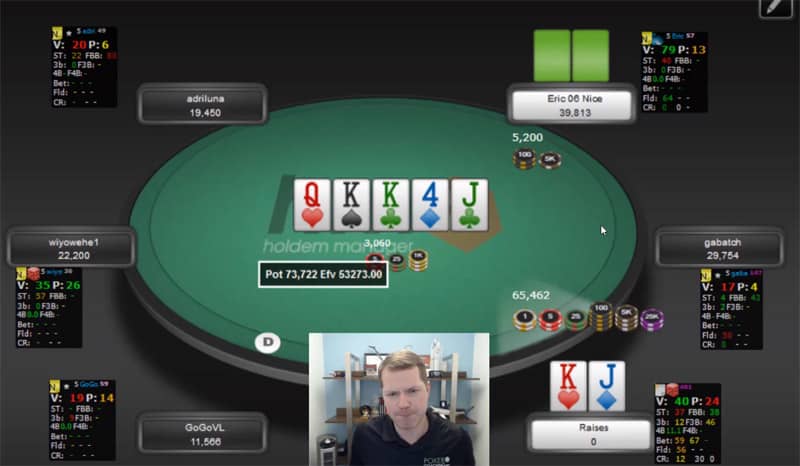
In addition to the educational value, this review definitely has some entertainment as well.
It’s funny to see how Little tries to analyze players’ ranges in certain spots (using sound poker knowledge) only for them to show up with the most random hands now and again.
Day 14, 15: Doing Your Homework Right
All Pokercoaching.com courses have homework assignments that come with them, which is also true for the 30 Day Tournament Preparation Challenge.
Right as you get to the middle point of the challenge, you’ll come across two videos explaining how to do these assignments and get the most out of it.
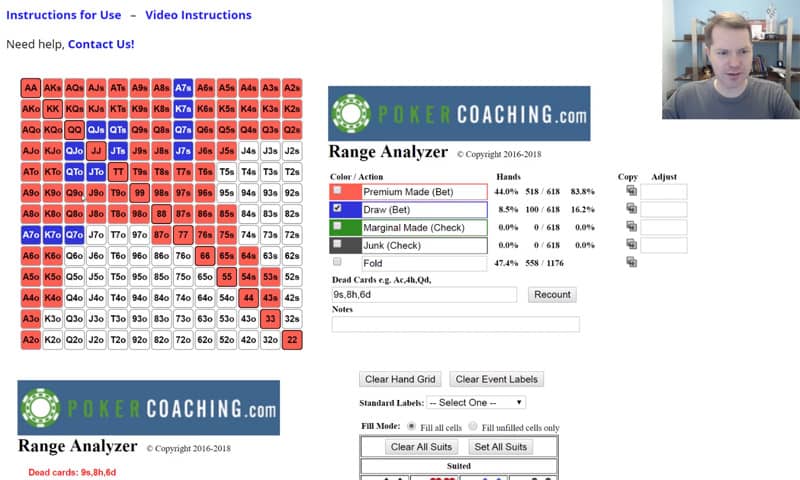
In the first video, Little takes time to explain how things work in Range Analyzer, the main tool you’ll need to use to complete these tasks. The second video features one of the previous assignments and shows the entire process of completing it, from start to finish.
These are more technical lessons, and if you’ve been involved with Pokercoaching.com training for some time, you might not need these as you already know how to do this.
If this is your first course here, though, these lessons will make your life easier and save you some time.
Day 16 & 17: A Jonathan Little Tournament Review with Michael Acevado
The two-part series featuring Michael Acevado reviewing Little’s play in a high stakes tournament is probably one of the most complex lessons in this entire Jonathan Little Tournament Challenge.
Acevado, a high-level pro player himself and a GTO expert, joins the webinar to shed some light on several interesting hands.
Acevado’s approach to analysis is definitely next-level, and it may be a bit too much for lower stakes players. Many of the spots are broken down into great detail using the best poker software as Little and Acevado go back and forth, exchanging their thoughts and sharing ideas.
Even if things can get a bit difficult to follow, watching this kind of analysis is quite captivating.
Little is doing his part in asking Acevado tough questions and not letting him get away with saying something is right just because it is.
He asks for further explanations and clarifications, which is something all students will surely benefit from.
Day 19 through 23: Mastering the HUD
A HUD is a very powerful tool that most online players rely on these days to provide them the information on opponents.
For those not familiar with it or just making their first steps into the world of online poker, Alex Fitzgerald provides an excellent multi-part series on everything you need to know about it.
The series begins with the video explaining the importance of stats in general (not just in poker) and then moves on to cover all sorts of important statistics such as VPIP poker stats, PFR, RFI, c-bet, etc.
By the end of watching this mini-series named Master the HUD: Using Statistics to Destroy Your Opponents, you’ll have developed very solid fundamentals.

Read the full Holdem Manager 3 Review!
Across these videos, Fitzgerald brings numerous hand examples to demonstrate the power of the HUD and the information provided by it.
He shows how players with significantly different stats will show up with different ranges and will act differently in certain spots.
To convince those who may be reluctant to use HUD (as he was for the first few years of his career), he makes a funny comparison.
He asks the question if you’d like a dealer in a live room to give you a bunch of papers containing the information about every player’s tendencies and playing style.
That’s the kind of advantage you get when using a HUD.
Day 25 of pokercoaching.com challenge: The Bubble
As the Tournament Challenge is coming to a wrap, so are the lessons featured inside. One of the final theoretical topics covered by Jonathan Little is the bubble play.
Once the dreaded bubble approaches in a tournament, how can you adjust your play to take advantage of it?
Little emphasizes the importance of being aware of other players at your table and how they’re adjusting (or failing to adjust) to the new situation.
What they’re doing will dictate in great part what you should and shouldn’t be doing.
For example, if they’re disregarding the bubble entirely and playing aggressively, you can simply sit back and wait for them to bust.
If they’re playing too many hands before the flop but are scared of playing huge pots without the nuts, you can profit on that fact.
In the final section of the lesson, he looks into some examples and discusses the right play given stack sizes and the prize distribution, leading to the next section.
Day 26: Understanding ICM
Although the ICM poker strategy is very important for tournament players, this is one of the final lessons in the 30-Day Tournament Preparation Course.
It does make sense to have it near the end since ICM requires a solid understanding of other important concepts, which have all been covered up to this point.
This is a very long and detailed video in which Matt Affleck explains everything there is to know about ICM, starting with the difference between cEV and $EV and building on from there.
He also provides a couple of simple examples for those completely new to the idea to illustrate what ICM is all about.
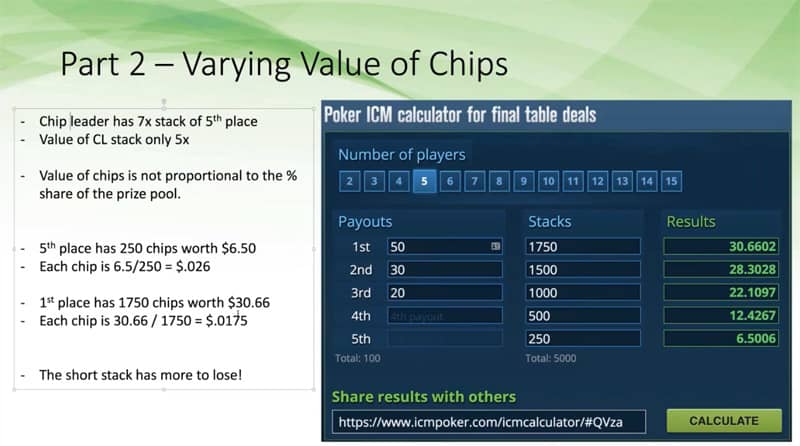
Affleck introduces the idea of Risk Premiums to try and explain how things can change in different tournament scenarios.
Having enough equity to call in terms of cEV (chip expected value) doesn’t necessarily mean you should call when considering other relevant factors in a tournament setting.
If you want to understand ICM better and have struggled with this concept in the past, this video will definitely clear many things for you.
Day 27 & 28: Final Tables of High Roller Events
Wrapping things up are two videos featuring a cards-up coverage of the PokerStars $2,000 Sunday High Roller event.
Jonathan Little takes it upon himself to review the play on the final table and looks into many different spots, addressing things such as:
- 3-betting
- ICM considerations
- Board structures and c-betting, etc.
These videos have been done without any preparation, i.e., this is the first time Little is watching them, so you get his genuine thoughts.
Clearly, you won’t find many major leaks on this level, but it’s fun to watch high stakes pros going at it and have another experienced player commenting on the action as it unfolds.
Day 30: Crushing Small Stakes Tournaments + Final Exam
The final day of the Pokercoaching.com Tournament Preparation course contains another lengthy video lesson as well as the final exam that you can use to see how well you’ve done and how much of what was taught in the course you’ve memorized.
The video is another lesson from Jonathan Little covering play in small stakes tournaments and finding ways to make more profit from them by:
- Exploiting wide ranges
- Exploiting weak players
- Playing optimally on the bubble and when there are pay jumps
You should already have a pretty good idea of how to do all of these things based on the knowledge from the previous lessons, but Little hammers home a few more interesting ideas that are particularly relevant for lower stakes events.

As for the final exam, it contains 30 multiple choice questions covering different areas from all the lessons you’ve watched up to this point.
You should have no problems getting most of these right, but you can always go back to the particular lesson and re-watch it if you do struggle with some of them.
Summary: How Good Is 30 Day Tournament Preparation Challenge?
If you’re looking to improve your tournament play and develop new skills, the Pokercoaching.com Tournament Preparation course will help you do that.
It’s one of the more extensive training programs available out there, and it covers many vital areas that quite a few players struggle with.
One thing that could be done better is the structure of the course. The way it is organized may feel a bit off at times, but I guess nothing is stopping you from watching lessons in the order you like or even skipping some days for that matter.
To sum it up, if you’re keen on getting better at tournaments, this Jonathan Little MTT challenge will help a great deal.
It’s not a magic pill that will make you better overnight, and you’ll need to put in some work of your own, but it’s the quality content created by some very good players and coaches, so you won’t regret investing your money into it.










